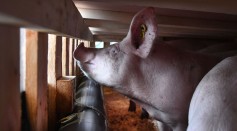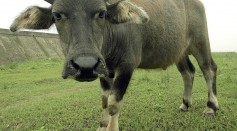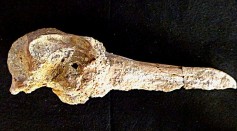Animals
4.5-Foot Alligator Gar Caught in Kansas for the First Time, 'Living Fossil' Can Be Traced Back Nearly 100 Million Years Ago
Leprosy in Wild Chimpanzees Detected in Primates with Symptoms Similar to Those in Infected Humans

African Swine Fever Spreads Anew; Reports Describe It as Another Global Pandemic, This Time Among Pigs

Why Do Squirrels Collect Nuts? Man Discovered His Pickup Truck Became a Storehouse After Finding 150Kg Walnuts

Epizootic Hemorrhagic Disease Threatens Wildlife in Vermont and New York This Fall

Foot-and-Mouth Disease in African Buffalo Shows Persistence of Highly Infectious Pathogens

Ohio Farm Armyworms Will No Longer Damage Your Fields and Lawn, Researchers Discover How to End Pests

Barry the Owl's Death in New York Potentially Caused by Rat Poison That Affected Flight Ability

Giant Penguin Fossil in New Zealand Discovered By School Children, 3D Scanning Methods Shows It Is From 34.6 Million Years
Potty-Trained Cows: Scientists Get These Animals to Urinate in Specially-Constructed Toilet; An Initiative to Curb Greenhouse Emissions
Woolly Mammoth Back to Life: What George Church’s Colossal Intends to Happen Through CRISPR Gene-Editing System

Radioactive Injections: How Does This Method Help Against Slaughtering of Rhinoceroses, Poaching, Smuggling of Rhino Horns?
Frog Foam Potential Treatment for Skin Cancer; Study Claims It Could be an Effective Substitute to Existing Prescriptions
Cat Species: Scientists Reveal Where the Classic Tabby Got Its Stripe Feature
Most Popular

AI Revolution in Medical Education: Transforming How Healthcare Professionals Learn

Optimizing Complex Catalog Systems with Graph Theory and Indexing

Out of Office, Not Out of Mind: Planning for Employee Holiday Absences

Nikolay Karpenko Biography, Photo, Career, Accomplishments





